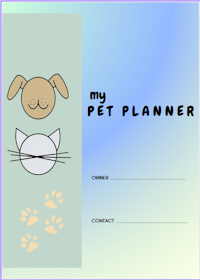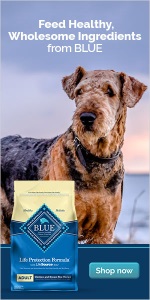Norfolk Terrier
A Cousin Of the Norwich
And Just As Cute!
The Norfolk Terrier is very similar in appearance to its cousin, the Norwich Terrier and originally had the same name.
The drop-ears of the Norfolk, are the main difference between the two breeds - a feature that could easily go unnoticed by the casual observer.
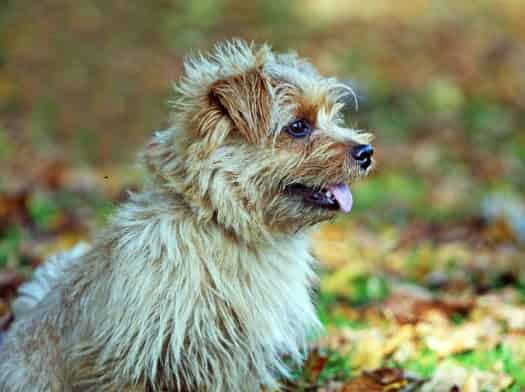 Norfolk Terrier
Norfolk TerrierOther subtle differences in the Norfolk that have been noted by breeders include:
- feet appear larger,
- bark is higher pitched,
- coat is less harsh,
- expression is softer etc.
What these two breeds have in common is their bygone occupations as fearless hunters of
fox and badger, as well as their prowess on the farm as ratters.
The Norfolk Terrier takes its name from the county in England where it was developed along with the Norwich in the 1800s - and where they shared the same name for a while. Subsequently, the two terriers were reclassified as separate distinct breeds.
Over the years of its development the breed was known by a series of names which included Cantab Terriers, Trumpington Terriers, as well as Jones Terriers.
Both breeds, are two of the cutest dogs you'll ever lay eyes on. If you want one of these charming dogs, you may have to get on a list as the litters they produce are very small.
Personality and Traits of the Norfolk Terrier
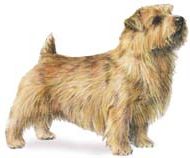
The Norfolk Terrier is independent, even-tempered and likes to please.
He is capable of very
focused attention and as a result, is easy to train as long as training is consistent and the owner is firmly
established as the boss.
Use rewards during training as this breed really enjoys treats, but this should not be overdone for weight concerns!
Norfolks are happiest being in close proximity with the family and
involved in everything going on. Owners say they are very affectionate,
feisty and playful.
The Norfolk likes being busy so training them to do a job is ideal. Being left alone for very long is not the best for this pack animal.
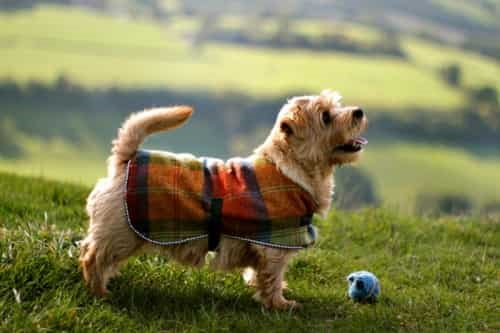 Kofi by F. Lautieri
Kofi by F. Lautieri Appearance and Care
Height: 9-10 inches
Weight: 11-12 lbs.
Color variations: Red, Wheaten, Black/Tan, and Grizzle
The Norfolk has a double coat, wiry on the top and softer underneath.
Regular stripping is needed to maintain the coat in its beautiful natural state. Owners may choose to clip the coat but if they do it will change the texture.
Weekly brushing should be done for maintenance to avoid mats along with regular attention
to ear cleaning, tooth brushing and nail cutting.
Health Notes
According to the Norfolk Breed Club, incidences of some inherited diseases have been noted that may affect the breed during its lifetime of up to 14 years or more.
They include:
- Eye disease,
- Mitral valve heart disease
- Luxating Patellas
- Hip Dysplasia
For this reason, when seeking a puppy, its best to find a professional breeder who has had the parents evaluated by means of these tests:
- Patella Evaluation
- Cardiac Exam
- Ophthalmologist Evaluation
Activity Level of the Breed
This energetic and active dog needs exercise. A significant daily walk will not only keep him happy and healthier, it will also provide mental stimulation.
Beyond that, an opportunity to
romp off-leash in a secure area, would make his day!
Ideal Living Space
The Norfolk Terrier can adapt to small or large accommodations - so condo, apartment or house.
That being said, this little one is very active so an outdoor area for play or training
would be the best of both worlds.
Children and the Norfolk?
The Norfolk Terrier is a very suitable dog for children who are mature enough and have been taught how to be considerate of pets and
treat them kindly.
As always, adult supervision is the best recommendation whenever children interact with
any pet.
Seniors or Less Active Families?
A great companion for seniors or the more sedentary life style, provided long daily walks can be arranged to satisfy his high energy.
Books To Read
The very latest information on the care of small dogs, as well as the safest, and fastest training methods for little dogs. Includes the very important topics of house training to house manners.
Comprehensive care information for all stages of the Norfolk's development. Covers breed history, characteristics, puppy selection, training, health care issues and more. Lots of color photos.
Kofi Image:
https://creativecommons.org/licenses/by/2.0) https://commons.wikimedia.org/wiki/File:Kofi_in_tartan_1.jpg



